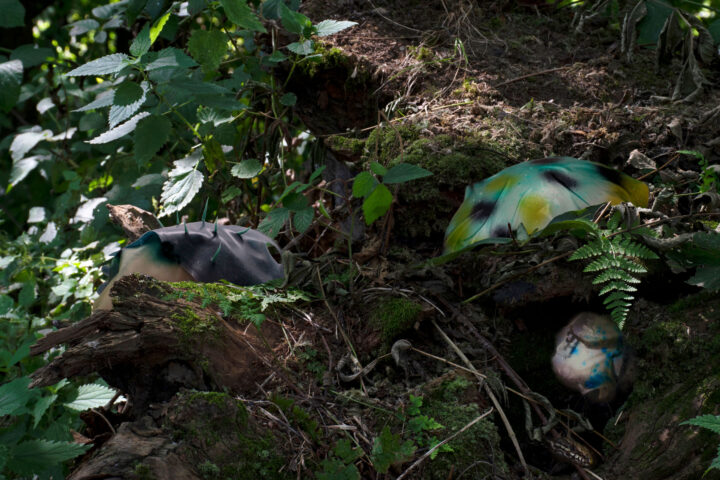Plug-in Habitat is named after the famous ‘Plug-in City’ (1963-66) by the neo-futuristic architectural group Archigram. ‘What happens if the whole urban environment could be programmed and structured for change?’ was the architect Peter Cook’s driving question. This notion of an architecture that adapts to change—present in their vision of a mutable city orchestrated by prefab removable dwelling capsules—is embodied in the intelligence of plants, whose structure is modular and distributed, without a central control, but with a cooperative organisation that adjusts to altering conditions in their context.
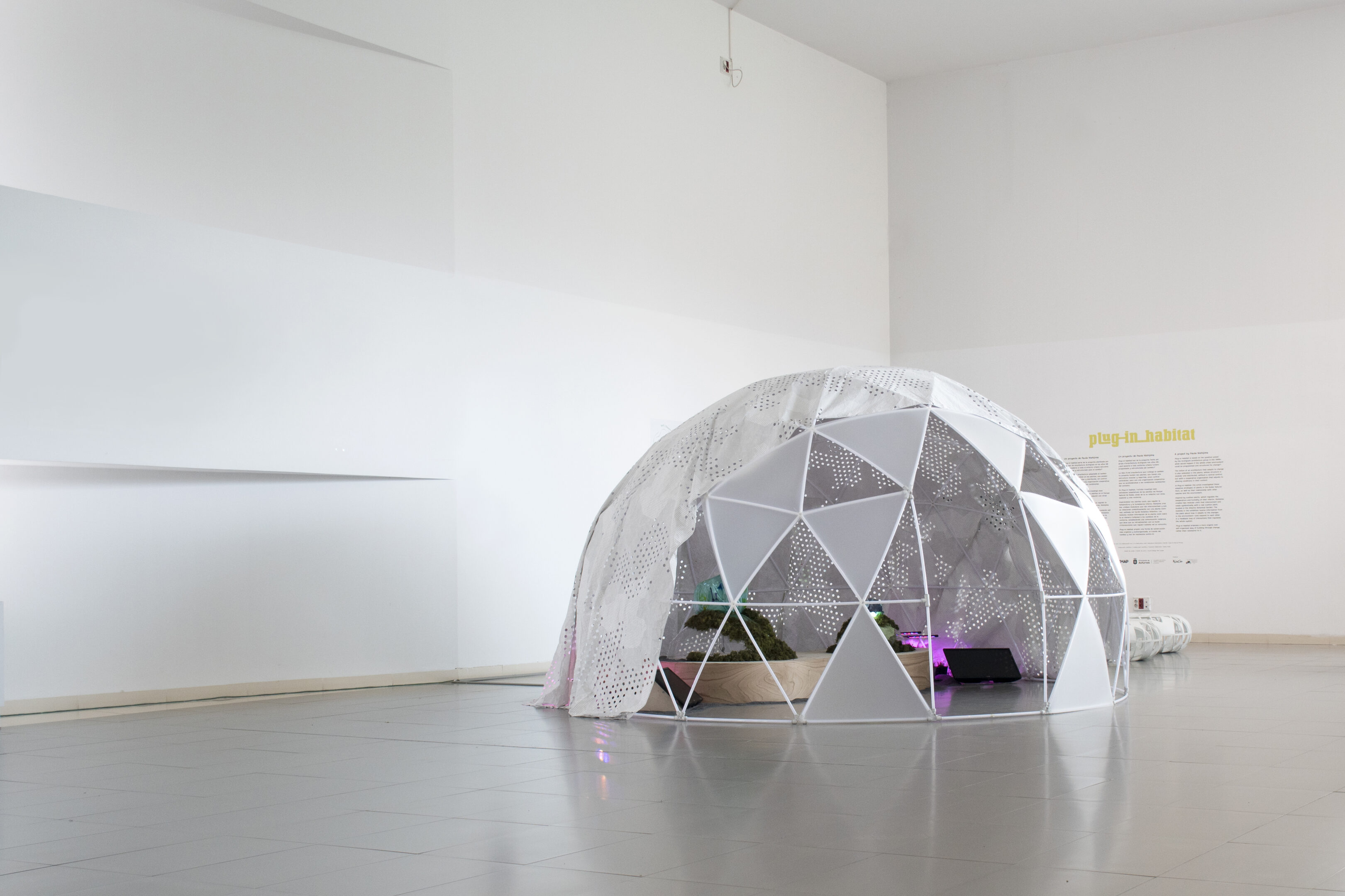
In Plug-in Habitat, Paula Nishijima uses a biodesign-imagining approach to create modular units that are attached to organisms and connected among themselves, constituting a superorganism. The artistic research is translated into a hybrid system that connected a cushion plant (Genista hispanica), located in the Atlantic Botanical Garden (Gijón/Spain) to two modules/sculptures, which mimic the behaviour of the plant, translating the way how it adapts to the changes into movement and light.
Cushion plants, which are known for regulating humidity and temperature within their ‘cushion’ form—creating a microclimatic shelter for other species—are the inspiration for one of the modules. The second piece is inspired by thorns and spiky structures of plants, which defend them from herbivory animals and also help reducing water loss during droughts.
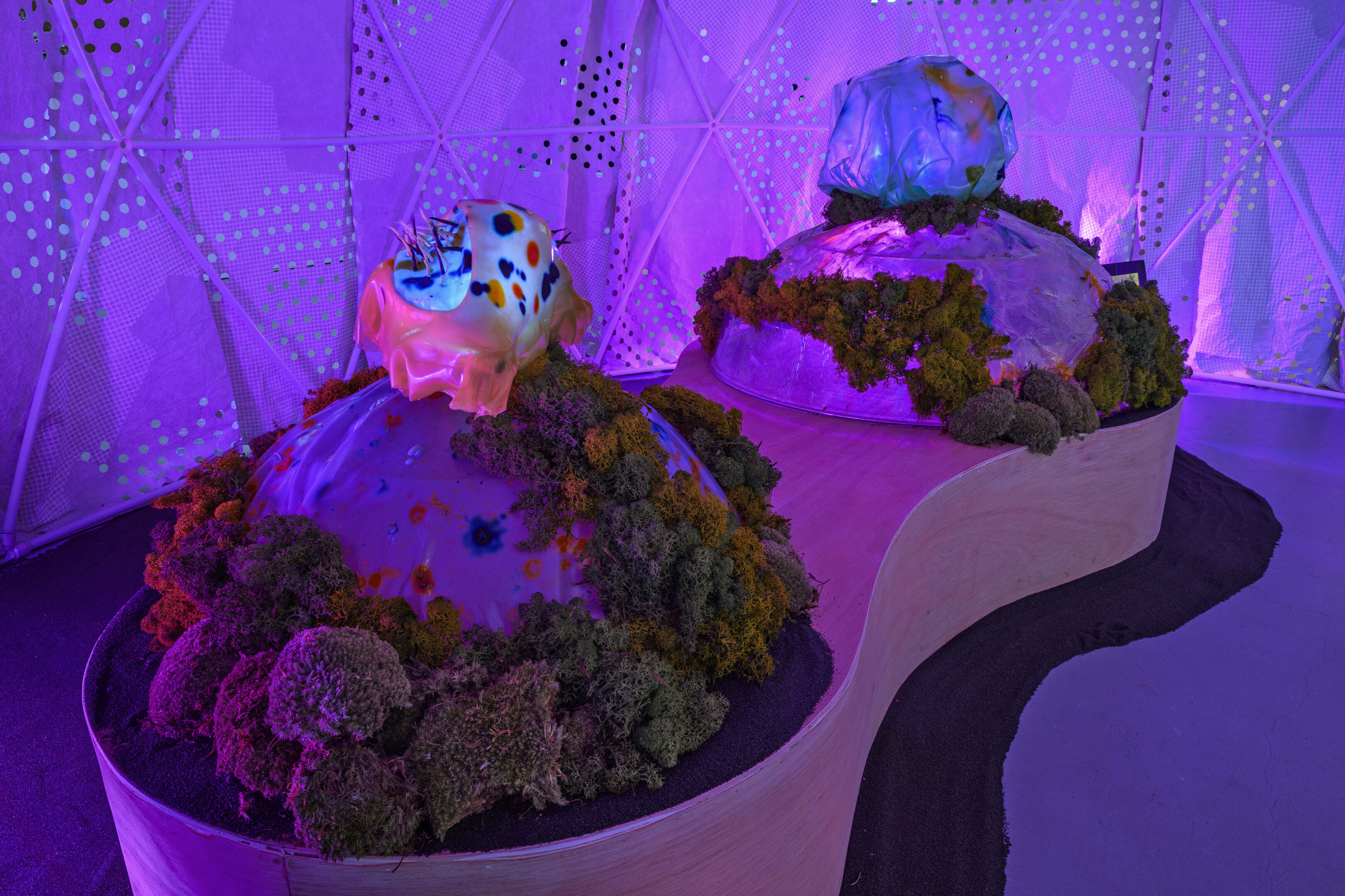
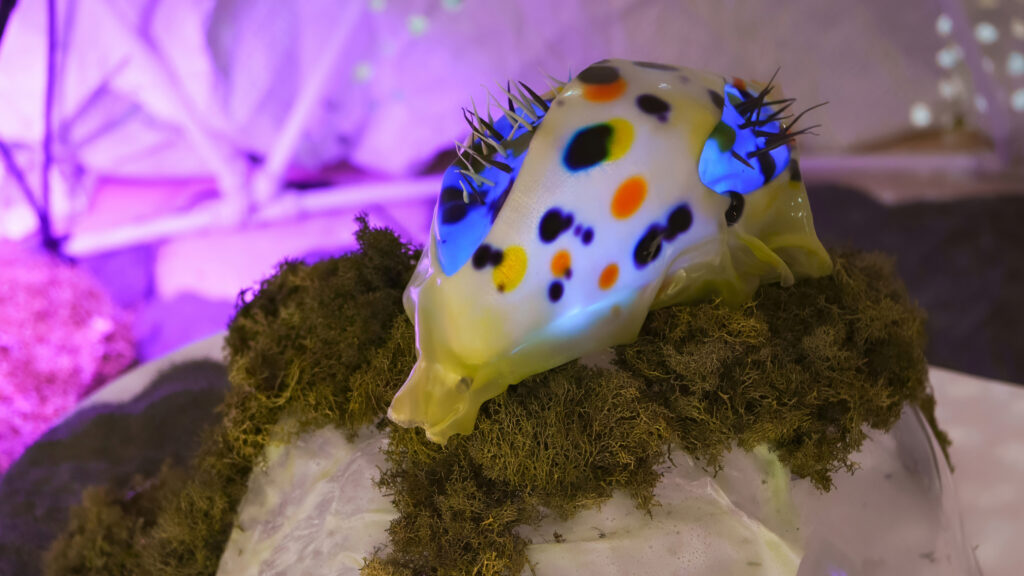
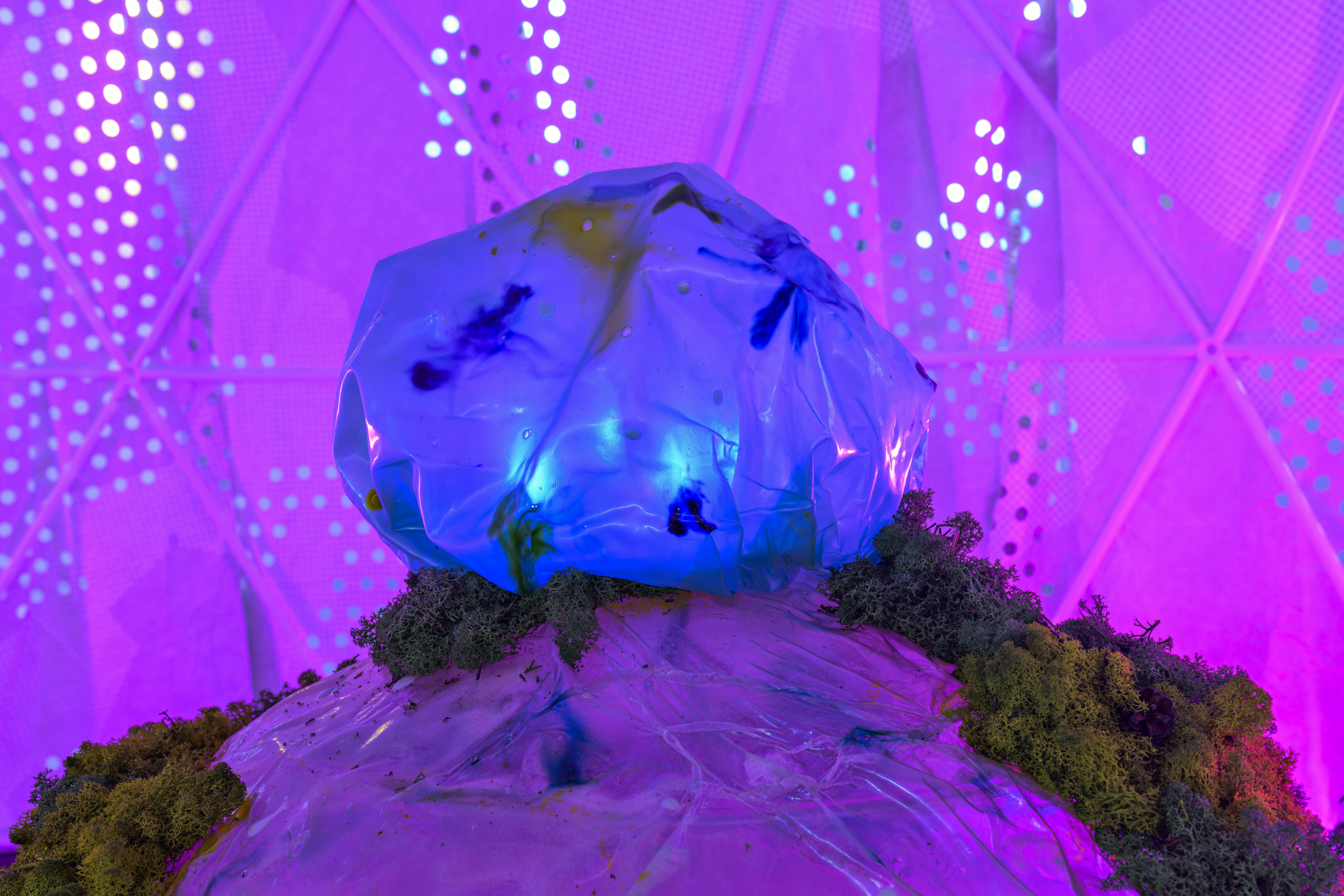
Plug-in Habitat speculates about the concept of a ‘symbiotic cyborg’, whose technological appendage is at the service of the ‘other’ rather than the individual to which it is attached. It addresses the idea of an evolution that emphasises the relationships and interactions between agents—rather than the neo-Darwinian logic of the survival of the fittest.
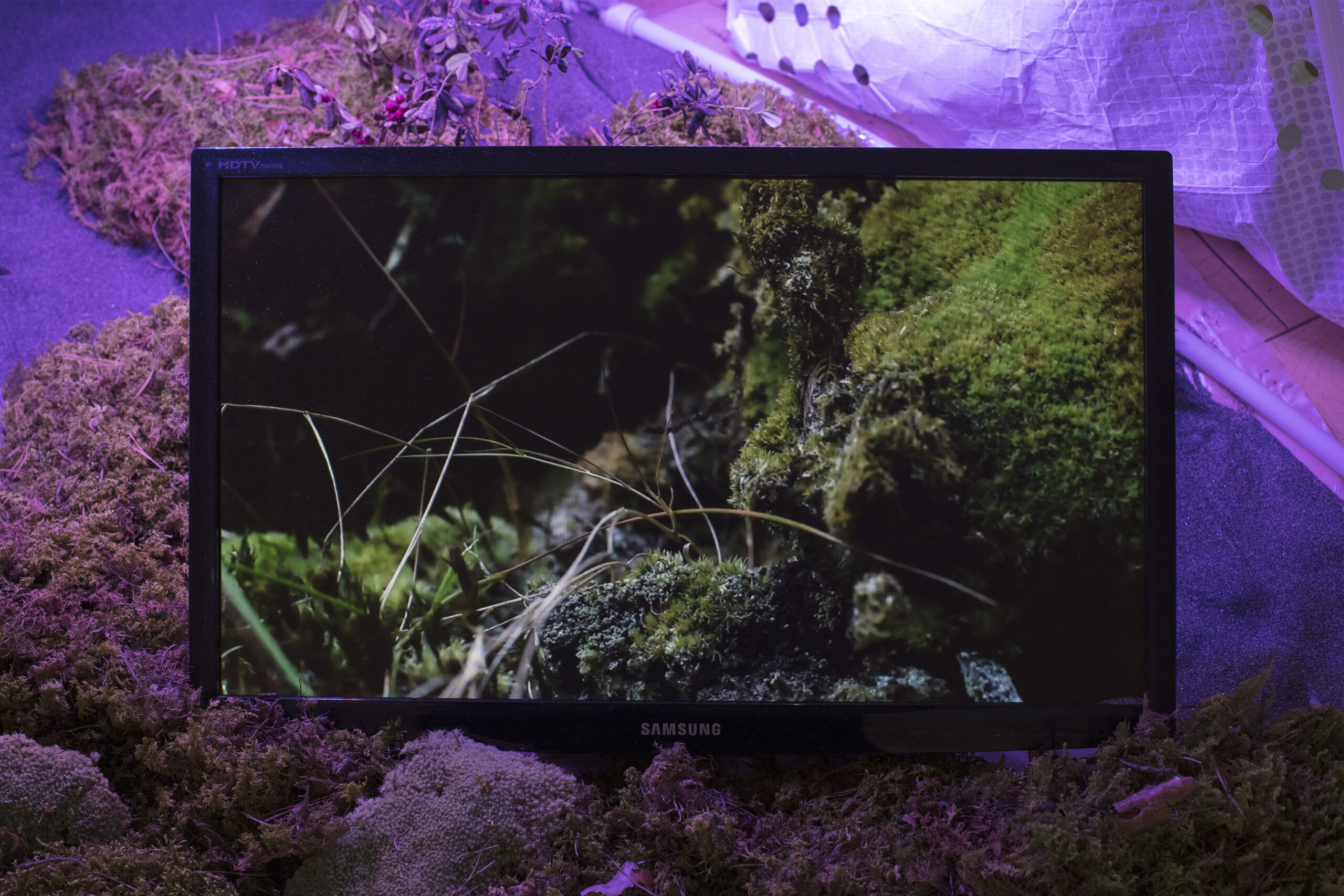
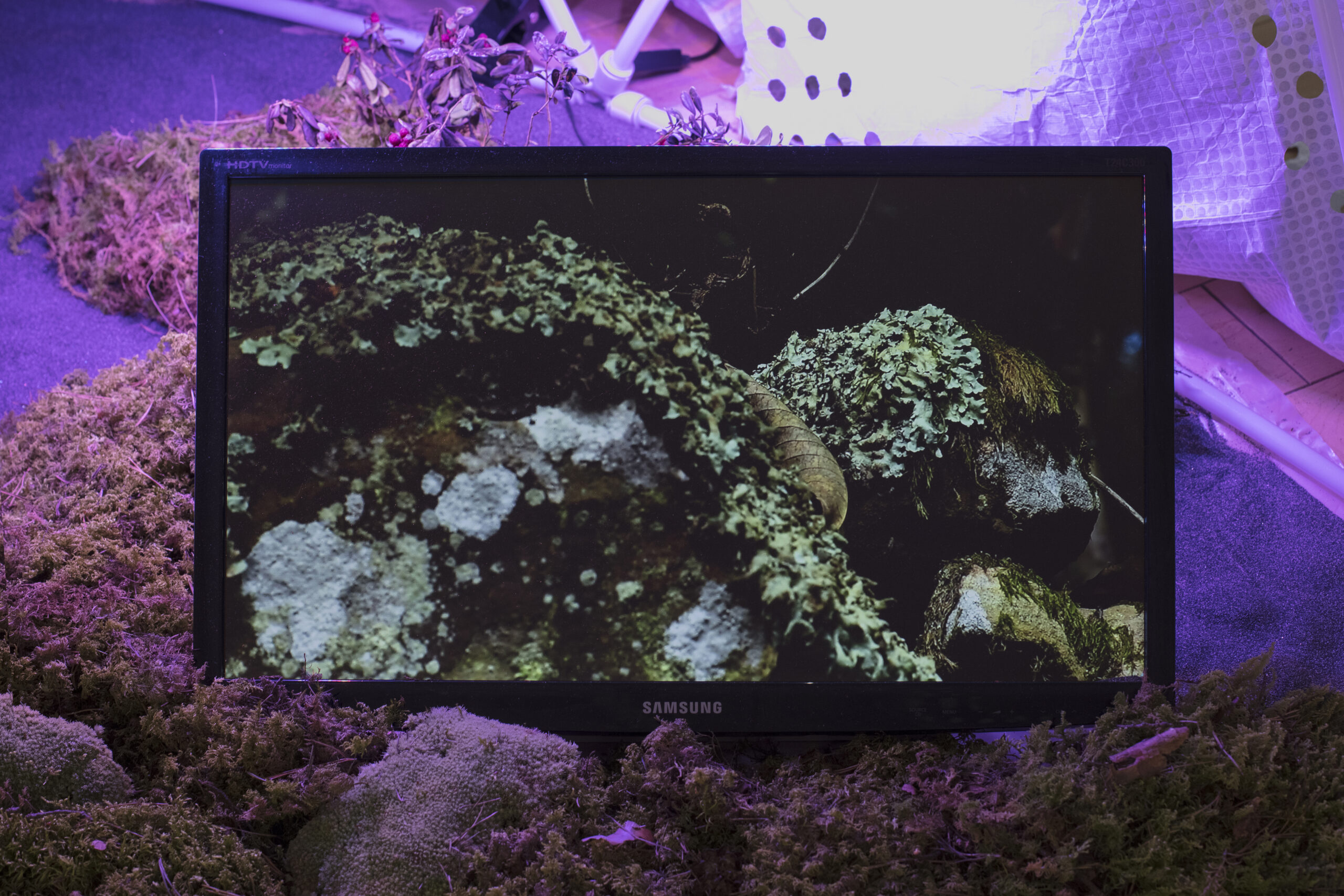
FIRST PHASE
During the residency at LABoral, I worked in collaboration with architect Marlén López, co-founder of Laboratorio Biomimetico, a research and training space in Ladines. The Redes Natural Park—considered a Biosphere Reserve by UNESCO since 2001—was the place where we did field research into local species and their biological strategies to adapt to the harsh climate of mountains. An investigation into biomaterials was also incorporated to the project, whose physical components are made of bioplastic. I also received input from Prof. Tobias Seidl, full Professor of Bionics at the Westfälische Hochschule in Bocholt, Germany, with whom I developed the functional architecture of Plug-in Habitat.



A kit of sensors measured the temperature and humidity within the plant’s dome shape. This data was sent to the modules that reacted with movement and light according to how these parameters change during a day cycle. Its technical architecture uses a LoRaWAN network and Helium—a decentralised wireless IoT network and blockchain—to collect and store data from the plant.
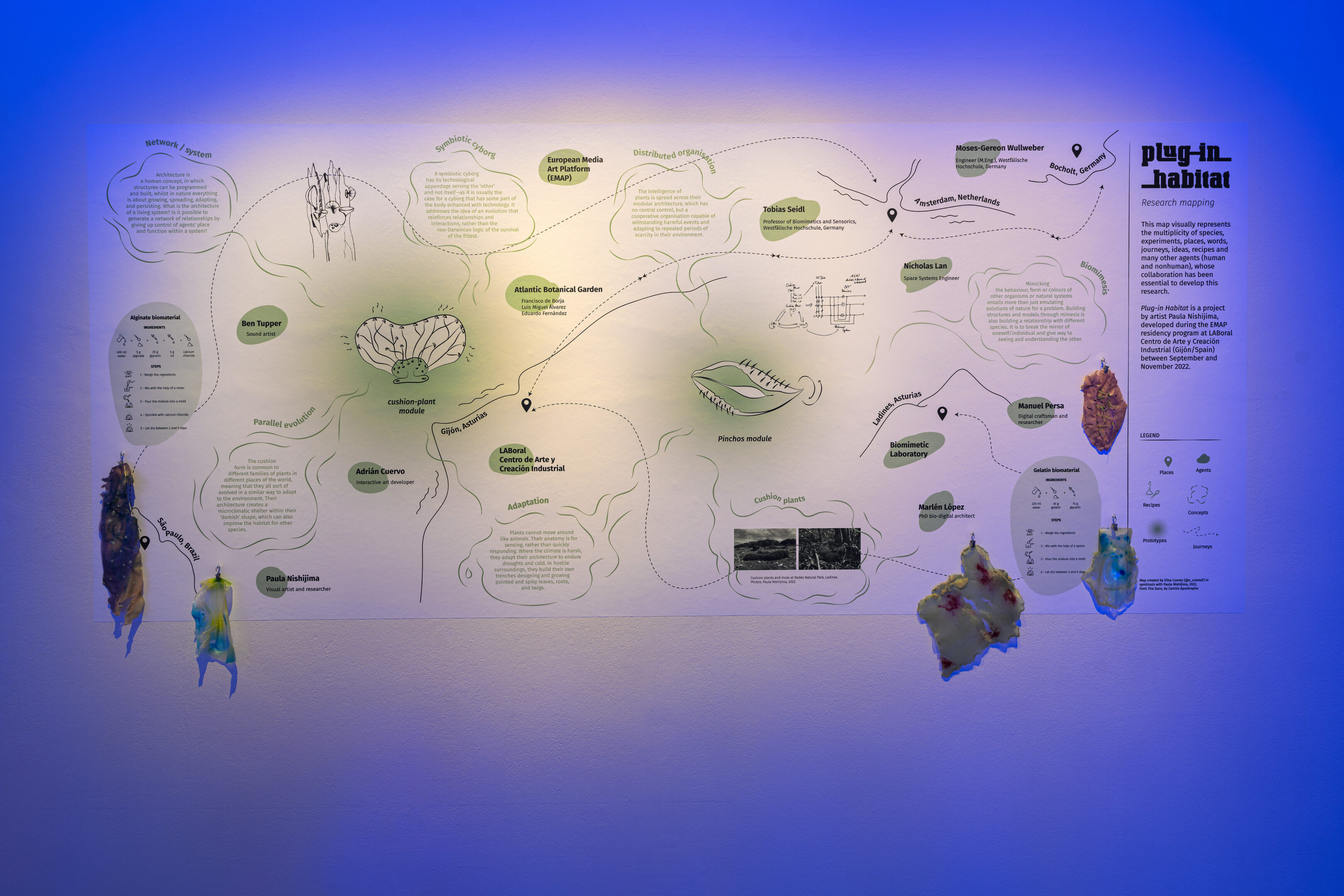
SECOND PHASE
After setting up the technical architecture of Plug-in Habitat and developing prototypes for the modules, I am currently working with Space Systems Engineer Nicholas Lan, with whom I have analysed the patterns of behaviour of the cushion plant to make a composition of movement and light for new modules.
We used the pre-recorded data from the cushion plant, which illustrates how it adapts to changes in the environment, to translate it into movement and pulsing light. This is a preparation to the next phase of the project, in which the modules will behave according to what they have learned from the plant.
Plug-in Habitat was realised within the framework of the European Media Art Platforms residency program at LABoral Centro de Arte y Creación Industrial with support of the Creative Europe Culture Programme of the European Union.
Credits
FIRST PHASE
Host institution: LABoral Centro de Arte y Creación Industrial, Gijón, Spain
In collaboration with Biomimetic Laboratory (Marlén López & Manuel Persa)
Scientist collaborator: Tobias Seidl, (Westfälische Hochschule, Germany)
Biologists from the Atlantic Botanical Garden: Francisco de Borja
Jiménez-Alfaro and Eduardo Fernández Pascual (Oviedo University, Spain)
Sound artist: Ben Tupper
Interactive designer: Adrián Cuervo
Telecommunication developer: Alejandro Juan García
Graphic designer of mural: Elisa Cuesta
Video documentary: Nadia Penella
SECOND PHASE
3D print: Moses-Gereon Wullweber (with the support of Westfälisches Institut für Bionik, Germany)
Space systems engineer: Nicholas Lan
